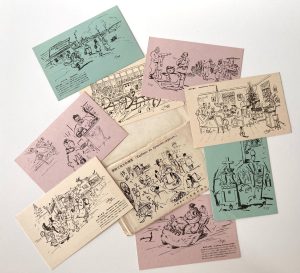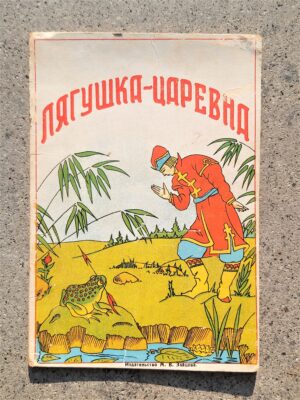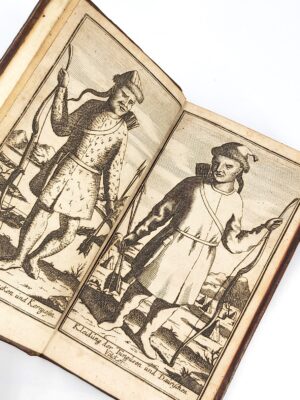Our Notes & References
Witty depictions of the Russian diaspora in Harbin under Japanese occupation. A complete set of these fine postcards, within the printed wrappers: very rare so, as we could not trace any example in public libraries, and only one copy passing through the market in Russia; none in the West.
In 1923, Ruf Ananin (1907-79) emigrated with his family from Chita (Russia) to Harbin, where he continued his studies before working as a newspaper caricaturist and illustrator. In 1931, Manchuria was occupied by the Japanese Imperial Army and became part of the puppet state of Manchukuo. Ananin apparently continued his work as a newspaper artist and very likely collaborated with the Kharbinskoe vremia [Harbin Times], a company backed by the Japanese government in 1931-45.
His postcards appeared during that time: their long captions are in Japanese, with only a few words in Russian, and one of the cards integrates the date of 1931 in the drawing (showing the Russian cemetery and a chapel). Their recognisable newspaper style, mixing wit, realism and caricature, gives a sense of this very peculiar city of Harbin in the 1930s thanks to a variety of subjects. For example one card shows Russians’ life in “Nakhalovka”, a settlement resulting from unauthorised development: it depicts a shed in the back streets of Harbin, but with the sign “Pervoklassnyi restoran” [Premium-class restaurant]. The main residents of this area are “the cabaret dancers, the factory girls, the washerwomen, the courtyard guards, the night watchmen, the dishwashers, and other lower classes […] Even though they are poor, they put white curtains on their windows to embellish their homes and have loving families” (our translation here and below). Next to the restaurant is a dancing cossack in his traditional attire possibly after entertaining people at a “Christmas banquet”.
Another card takes on the barakholka, or flea market, with the anecdotic inscription: “if you get robbed, go look for it in the barakholka. There is a wide selection of rare items, from [..] dolls with no hands, bottomless pots, to remanufactured old clothes, and clocks that do not ring”.
Other images include Russian festivities for Christmas in an apartment decorated in a pre-revolutionary style; a sumptuous Chinese funeral procession; a restaurant with a bartender looking like Stalin and ready to drink with his customers; a sledge across the Songhua River with a corpulent passenger: “if you’re Japanese, it’s easy to sit side by side with about 3 people, unless you ride with a Russian woman who seems to be 10 poods [163 kg]”; an intense race at the hippodrome captioned: “the cries of joy and sorrow from the crowd can be heard in Japanese, Russian, and other languages in this international city of Harbin”.
Ananin’s work wasn’t judged harmless: the Soviet army entered Harbin in August 1945 and our artist was arrested shortly afterwards, taken to the USSR and charged with “working in the Japanese mission in Harbin from 1941 to 1945, making anti-Soviet cartoons and propaganda posters defaming the Soviet Union” (Chebodaeva). He was sentenced to 20 years of imprisonment in the Gulag where he stayed until 1956 and later worked as a theatrical designer in Abakan, a Siberian city.
Bibliography
Maina Chebodaeva, “Zhivsii v Khakasii khudozhnik russkogo zarubezhia Ruf Ananin – kto on?”, IA Khakasia, 2020.
Physical Description
Eight postcards (9.2 x 14.3 cm) with printed drawings, with printed signature of the artist. Two on light blue, three on light pink and three on beige thick paper.
Binding
Illustrated publisher’s envelope.
Condition
Envelope torn and extensively split at edges but complete, lightly stained; postcards in excellent condition.






























